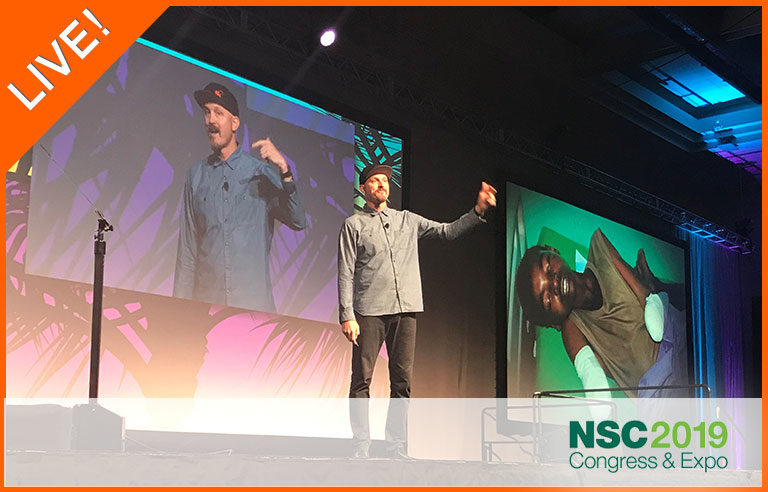Entrepreneur, philanthropist inspires attendees to help others during Opening Session

San Diego — For Mick Ebeling, it started with one solution, which led to another … then another … and another.
At an art gallery show to benefit Tony Quan, a Los Angeles street artist with Lou Gehrig’s disease, Ebeling, a veteran of the film production business, began to look for answers to seemingly impossible challenges to help benefit humanity.
Speaking to several thousand safety professionals Monday during the Opening Session of the National Safety Council 2019 Congress & Expo, Ebeling shared how his company, Not Impossible Labs, was born.
“When you see something that’s absurd that has to change and it speaks to you, first you commit and then you figure it out,” Ebeling said. “That’s what you all do all the time anyway. You see a problem that has to be solved. Do you know how to do it when you say you’re going to do it? No.”
Determined to help Quan, Ebeling invited a diverse group of “makers, hackers and mad scientists” to move into his home, where they came up with the Eyewriter, which Quan used to create art again. The device tracked his eye movement so he could draw for the first time in seven years.
When Ebeling learned of a missionary doctor in Sudan who was treating thousands of amputees during an ongoing war there, Ebeling worked with his team to produce low-cost, 3D-printed prosthetic hands and arms to help change the lives of those affected.
Among them was 12-year-old Daniel, who badly feared being a burden on his family. The prosthetics allowed Daniel to feed himself for the first time in two years and gave him a new lease on life.
“How will you use your intelligence and skills?” Ebeling asked the audience. “How can you use that to help people? Who is your one? Who is your Daniel?”
NSC President and CEO Lorraine M. Martin began the Opening Session talking about how safety leaders who see with their own eyes the challenges their workers face can have a bigger impact.
“To me, leadership means showing up and never leaving your people behind,” Martin said. “I discovered that improving safety required showing up as a leader to see what we ask of our people and to see what’s in their way.”
For Martin, who worked in the aerospace and defense industry at Lockheed Martin for more than three decades, that included crawling on her back inside the wing/fuel tank of a C-5 cargo plane to discover issues with fasteners inside the tanks.
“Being there and seeing it for myself made me realize we could engineer better tools for our mechanics, and we did just that,” Martin said. “Serving as a leader means you show up for those around you. That is what safety leaders do.”

